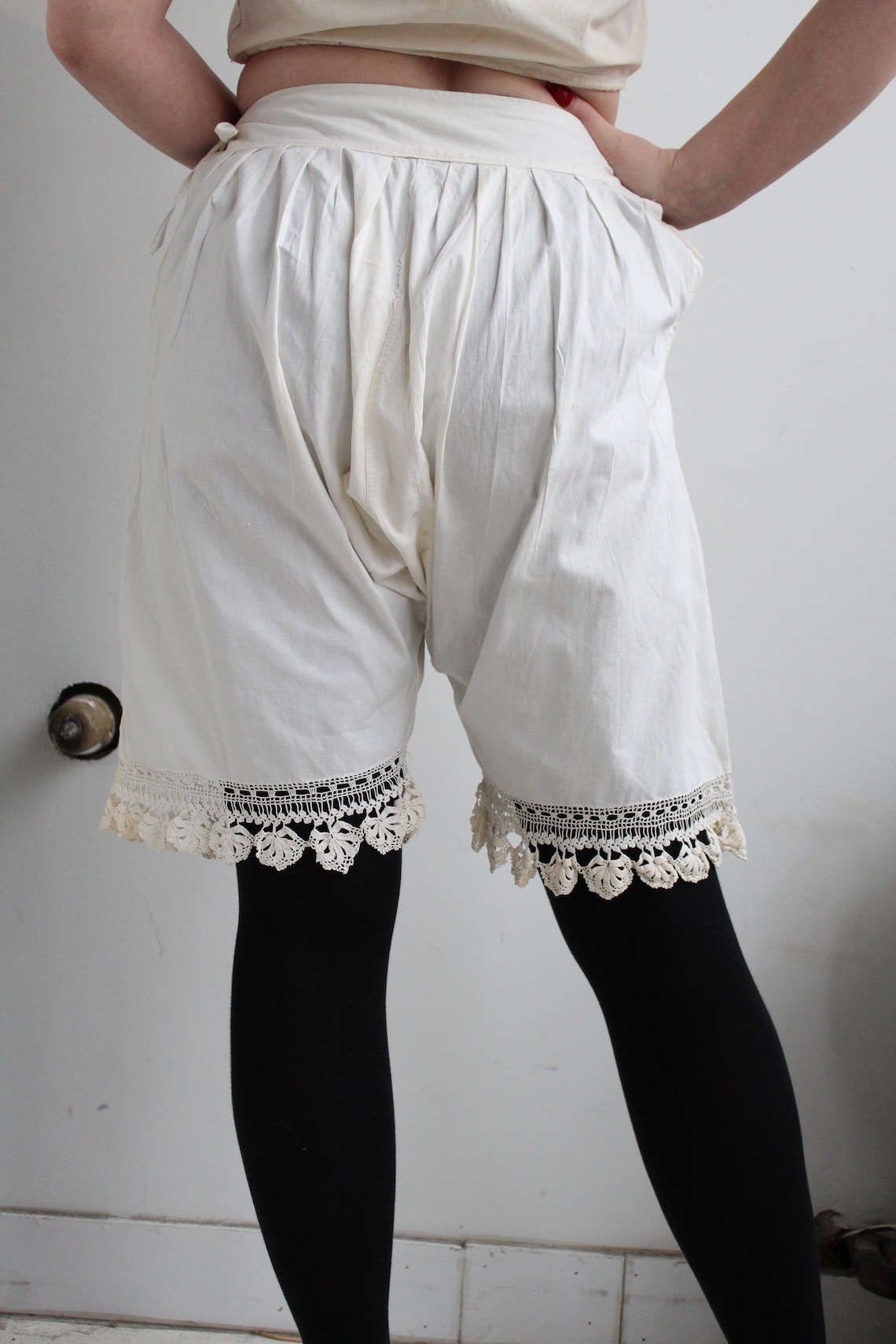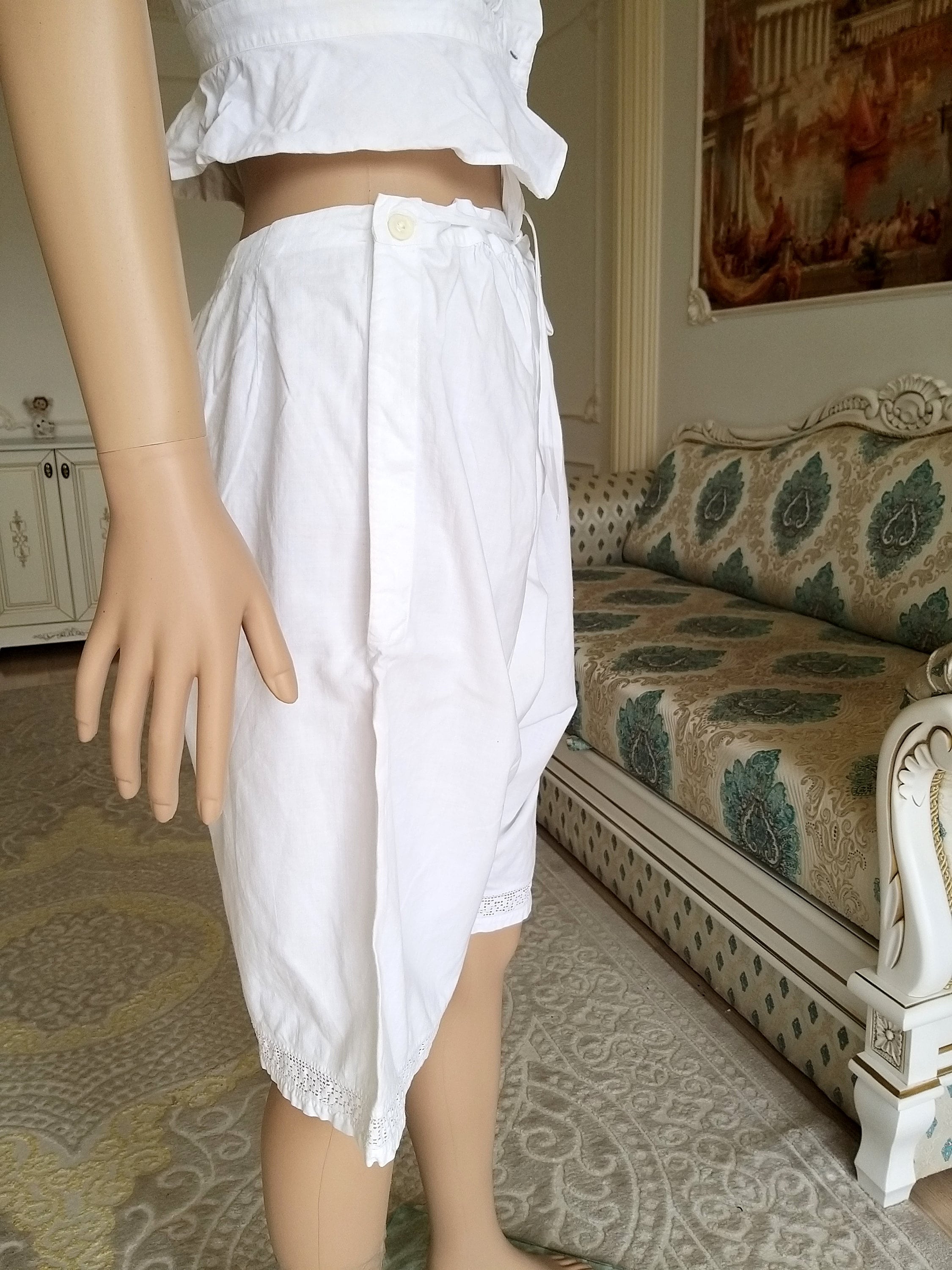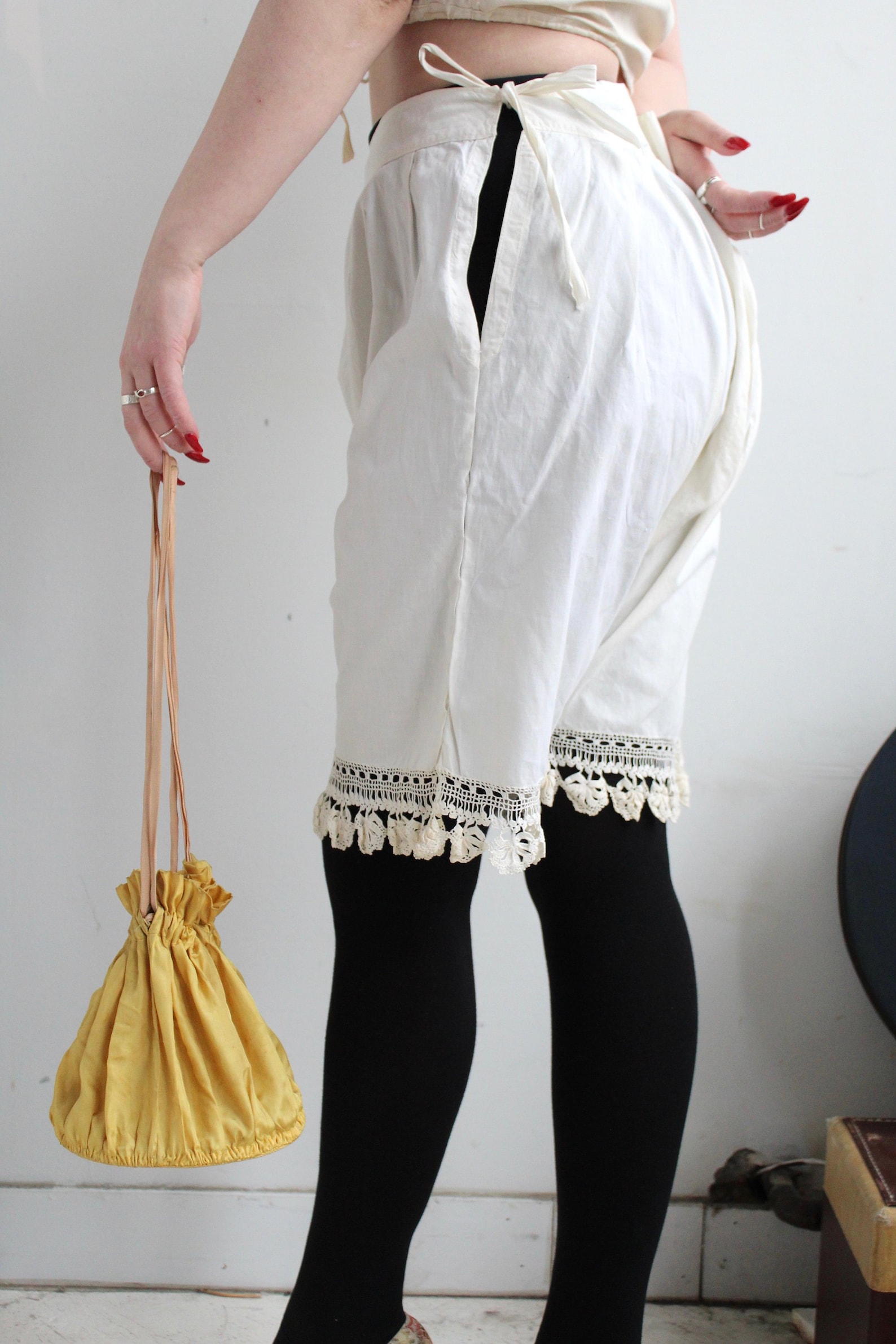Bloomers Modern - A Look At Enduring Style
Imagine a time when women’s clothing was, by and large, a bit of a burden, heavy and confining, making everyday activities quite a challenge. This wasn't just about fashion; it was about how people moved, breathed, and lived their lives. In this setting, a truly different idea for women’s attire began to take shape, something that offered a sense of liberation and ease. This fresh approach to dress, known by various names like the Turkish dress or simply reform dress, presented a significant departure from the usual styles, offering a glimpse into a future where comfort and practicality held more sway. It was, in a way, a quiet revolution in fabric and form.
This style, which we now often call bloomers, emerged during the 19th century, a period of considerable social shifts and new ideas. They were, in essence, divided garments for the lower body, a stark contrast to the long, flowing skirts that were the norm. This shift was, as a matter of fact, quite radical for its time, suggesting a move towards more sensible and less restrictive clothing. The concept behind them was quite simple yet profound: to give women more freedom of movement and a healthier alternative to the prevailing fashion trends.
The story of these garments is, too, almost interwoven with the broader narrative of women seeking greater independence and recognition. From their beginnings in the early 1800s, they quickly grew to symbolize something much bigger than just a piece of clothing. They represented, in some respects, a visible declaration for women’s rights, championed by figures like Amelia Jenks Bloomer. This makes their journey from a simple undergarment to a powerful emblem of change rather compelling, showing how a design choice can actually reflect deep societal transformations.
- Leaked Tiktokers Twitter
- King Nasir Twitter
- Haunted House Video Twitter
- Ghfan10130 Twitter
- Pollwatch Twitter
Table of Contents
- Who Was Amelia Bloomer and Her Role in Bloomers Modern?
- What Were Bloomers, Anyway?
- How Did Bloomers Become a Symbol of Bloomers Modern Freedom?
- The 19th Century's Take on Bloomers Modern Comfort
- Beyond the Undergarment - The Bloomers Modern Influence
- Are Bloomers Modern for Today's Wardrobe?
- A Fascinating History of Bloomers Modern
- The Bloomers Modern Legacy - More Than Just Clothing
Who Was Amelia Bloomer and Her Role in Bloomers Modern?
The story of bloomers, and their connection to a more contemporary outlook on women's attire, is quite often linked directly to a notable individual named Amelia Jenks Bloomer. She was, in fact, a significant figure who spoke out for what was called "rational dress" for women during the early part of the 1850s. Her efforts helped bring this distinct style into the public eye, giving it a name that many still remember. She was, essentially, an early champion for women's rights, and her association with these garments made them a very visible part of that larger movement for change.
While the provided information does not give us a full personal history of Amelia Jenks Bloomer, it clearly shows her importance in promoting a new way of dressing that was seen as more sensible and appropriate for the times. Her advocacy was a key reason why these divided garments, initially worn under dresses, gained such a strong symbolic meaning. She helped to present them not just as a fashion choice, but as a statement about personal liberty and a healthier way of life for women. It's important to remember that her role was more about championing the idea behind the attire than simply designing it, though her name became forever tied to the style.
So, when we talk about bloomers and their place in the ongoing conversation about women's attire, Amelia Bloomer's contribution is certainly a central part of that discussion. She helped move the conversation about women's clothing from mere appearance to something that also considered ease of movement and overall well-being. Her influence helped shape how these garments were perceived, transforming them into something that really spoke to a desire for greater freedom and a more practical approach to daily life. This connection is, basically, what makes her a key player in the narrative of bloomers.
What Were Bloomers, Anyway?
Bloomers, at their heart, were a truly different kind of garment for women, designed for the lower body. They were, quite simply, divided, meaning they had separate sections for each leg, unlike the typical skirts and gowns of the 19th century. This seemingly small detail was, in a way, a rather big deal for the period. People also knew them by other names, like the "Turkish dress," which probably hinted at their somewhat exotic appearance compared to Western fashion, or the "American dress," perhaps suggesting a new, independent style emerging from the United States. They were also often referred to, quite straightforwardly, as "reform dress," which really gets to the core of what they represented.
Originally, these garments were a type of bifurcated clothing, meaning they were split into two parts, and were generally worn underneath women's dresses during the 19th century. Think of them as a hidden layer that offered more movement and ease than the heavy, layered petticoats and restrictive undergarments that were the norm. The idea was to make women's clothing more practical for daily activities, allowing for a bit more freedom in how they moved about their day. This practical aspect was, as a matter of fact, a significant part of their early appeal, even if they were not always visible.
When people talked about the full "bloomer costume," it actually involved more than just the divided lower garment. The whole outfit typically included a short jacket, which, in a way, complemented the less voluminous lower half. This complete ensemble was, in fact, sometimes simply called "bloomers" as well, showing how the name for the individual garment became synonymous with the entire look. The development of this style in the 19th century was, for many, a step towards a more sensible and comfortable way for women to dress, challenging long-held ideas about what was considered appropriate attire.
How Did Bloomers Become a Symbol of Bloomers Modern Freedom?
The journey of bloomers from a mere item of clothing to a powerful symbol of modern freedom is, you know, quite a compelling tale. They were championed as "rational dress" for women, a concept that really pushed back against the restrictive and often uncomfortable fashions of the time. This idea of "rationality" wasn't just about looking different; it was about promoting clothing that made sense for a woman's body and her ability to participate actively in the world. The very act of wearing something so openly different was, basically, a quiet but firm statement.
Because early activists, like Amelia Bloomer herself, were so closely associated with these garments, bloomers quickly became a very visible sign of the growing women's rights movement. They weren't just a fashion choice; they were a uniform of sorts for those advocating for greater equality and independence. The decision to wear bloomers was, in some respects, a public declaration of support for changing societal norms and challenging the traditional roles assigned to women. This made them, quite literally, a walking billboard for social progress, a rather brave choice for the period.
The very idea of a "divided" garment for women was, you know, quite revolutionary. It allowed for a kind of movement and activity that was simply not possible in the long, heavy skirts that were then fashionable. This practical liberation, in turn, mirrored the desire for intellectual and social liberation that was at the heart of the women's rights movement. So, bloomers became more than just clothing; they became, in a way, a tangible representation of a woman's right to move freely, to think freely, and to live freely. This connection to personal liberty is, pretty much, what cemented their place in history.
The 19th Century's Take on Bloomers Modern Comfort
The 19th century, believe it or not, was a time when the concept of comfort in women's clothing was not always the top priority. Fashion often dictated elaborate, multi-layered outfits that could be quite heavy and restrictive, making daily life a bit cumbersome. It was into this world that bloomers emerged, presented as a healthier alternative. This "healthier" aspect was, in fact, a key selling point, suggesting a direct contrast to the corsets and voluminous skirts that could impede breathing and movement, causing various health complaints.
The idea was that by adopting a more sensible style, women could experience greater physical ease and well-being. The reduced weight and increased freedom of movement offered by bloomers were, you know, a welcome change for many. This focus on comfort and health resonated with a significant number of people, leading to bloomers gaining a very considerable level of popularity during this particular period. It showed that there was a real desire for clothing that didn't just look good, but also felt good and allowed for a more active lifestyle.
So, while we might think of "modern comfort" as a relatively recent concept in fashion, bloomers truly represented an early attempt to bring that idea to the forefront for women. They were a practical solution to the physical constraints imposed by traditional attire, offering a way for women to be both stylish and comfortable. This emphasis on practicality and personal well-being was, essentially, a forward-thinking approach to dress, making bloomers a truly noteworthy innovation in the history of women's fashion.
Beyond the Undergarment - The Bloomers Modern Influence
While bloomers started out, more or less, as an undergarment worn beneath dresses, their influence stretched far beyond their initial function. They had, as a matter of fact, a truly long and quite fascinating journey. From their very beginnings in the early 1800s, they quickly gained a significance that transcended mere fabric and stitching. They weren't just about what was worn; they were about what was being said, about challenging the established norms of how women should present themselves to the world.
The very idea of a bifurcated garment for women, even if hidden, was a radical departure that paved the way for future changes in women's fashion. It introduced the concept of trousers or divided skirts for women into the public consciousness, even if it took many more years for them to become widely accepted outerwear. This initial step, however small it might seem now, was, you know, a very important one in breaking down centuries of tradition regarding women's lower body attire. It opened up a conversation that had been, for a long time, simply off-limits.
The bloomers' legacy, therefore, isn't just about the garment itself, but about the conversation it started and the boundaries it pushed. It showed that clothing could be a vehicle for social change, a way for people to express their desire for a different way of life. This influence on the broader landscape of women's clothing and societal expectations is, quite frankly, a significant part of their enduring story, making them more than just a historical curiosity but a real touchstone for how fashion can reflect and drive progress.
Are Bloomers Modern for Today's Wardrobe?
When we think about whether bloomers are "modern" for today's wardrobe, it's interesting to consider their core principles. The original idea behind them was to offer comfort, freedom of movement, and a healthier alternative to restrictive clothing. These are, in fact, qualities that are highly valued in contemporary fashion. While the specific style of the 19th-century bloomer might not be a common sight on the streets today, the spirit behind them, that desire for practicality and ease, is absolutely current.
Today's activewear, wide-leg trousers, and even comfortable loungewear owe, in a way, a debt to the early reformers who championed garments like bloomers. The very notion that women should have clothing that allows them to run, cycle, or simply move without hindrance can, arguably, be traced back to these initial efforts. So, while you might not find a direct replica of the "Turkish dress" in your local clothing shop, the underlying principles that made bloomers revolutionary are very much alive and well in what we consider comfortable and practical clothing today.
In a broader sense, the idea of bloomers as a symbol of personal choice and challenging norms is, you know, still quite relevant. Just as bloomers were a statement against restrictive societal expectations, modern fashion often sees designers and wearers making statements about identity, comfort, and sustainability. So, in that way, the "bloomers modern" spirit of innovation and defiance against discomfort continues to shape how we think about and choose our clothes, making their historical impact still felt, pretty much, in our daily lives.
A Fascinating History of Bloomers Modern
The story of bloomers, and their role in shaping ideas about modern attire, is indeed a truly fascinating one, stretching across a significant part of the 19th century. They first began to appear in the early 1800s, suggesting a gradual evolution of ideas around women's clothing. This was a time when the world was changing rapidly, and people were starting to question many long-held traditions, including those related to dress. The emergence of bloomers was, basically, a part of this larger wave of reformist thinking.
As the century progressed, particularly by the early 1850s, bloomers gained more prominence, largely thanks to figures like Amelia Jenks Bloomer, who openly advocated for them as "rational dress." This period saw them transition from a relatively obscure concept to a widely discussed, and sometimes controversial, item. They were not just a new style; they were, in a way, a physical manifestation of a growing movement for women's rights, becoming a visible emblem of change and a challenge to the status quo.
Their journey from a simple undergarment to a powerful symbol of women's rights is, you know, a testament to how clothing can reflect deeper societal shifts. They emerged as a healthier option for women, offering a stark contrast to the confining fashions of the era, and quickly gained a considerable amount of popularity. This fascinating history shows how a seemingly simple garment could become intertwined with major social movements, leaving an indelible mark on both fashion and the ongoing quest for personal freedom.
The Bloomers Modern Legacy - More Than Just Clothing
The lasting impact of bloomers, and their connection to what we consider modern clothing, goes far beyond their immediate use as an item of dress. Their story is, essentially, a powerful example of how fashion can serve as a catalyst for broader social change. By challenging the norms of what was considered acceptable attire for women, bloomers helped to open up conversations about women's roles in society, their physical freedom, and their right to make choices about their own bodies. This made them, pretty much, a symbol of a wider cultural shift.
The very idea of "reform dress" that bloomers represented was, in a way, a precursor to many of the freedoms women enjoy in their clothing choices today. It laid some groundwork for the eventual acceptance of trousers for women in everyday wear, a concept that was truly radical in the 19th century. The discomfort and health issues associated with traditional women's wear were brought into the public discourse, prompting a reconsideration of how clothing affected a woman's life. This focus on practicality and well-being is, you know, a very important part of their enduring legacy.
So, when we look

Antique Victorian Edwardian Bloomers 1800s 1900s White | Etsy

20s Victorian bloomers M Antique bloomers womens bloomers | Etsy

Antique Victorian Edwardian Bloomers 1800s 1900s White | Etsy